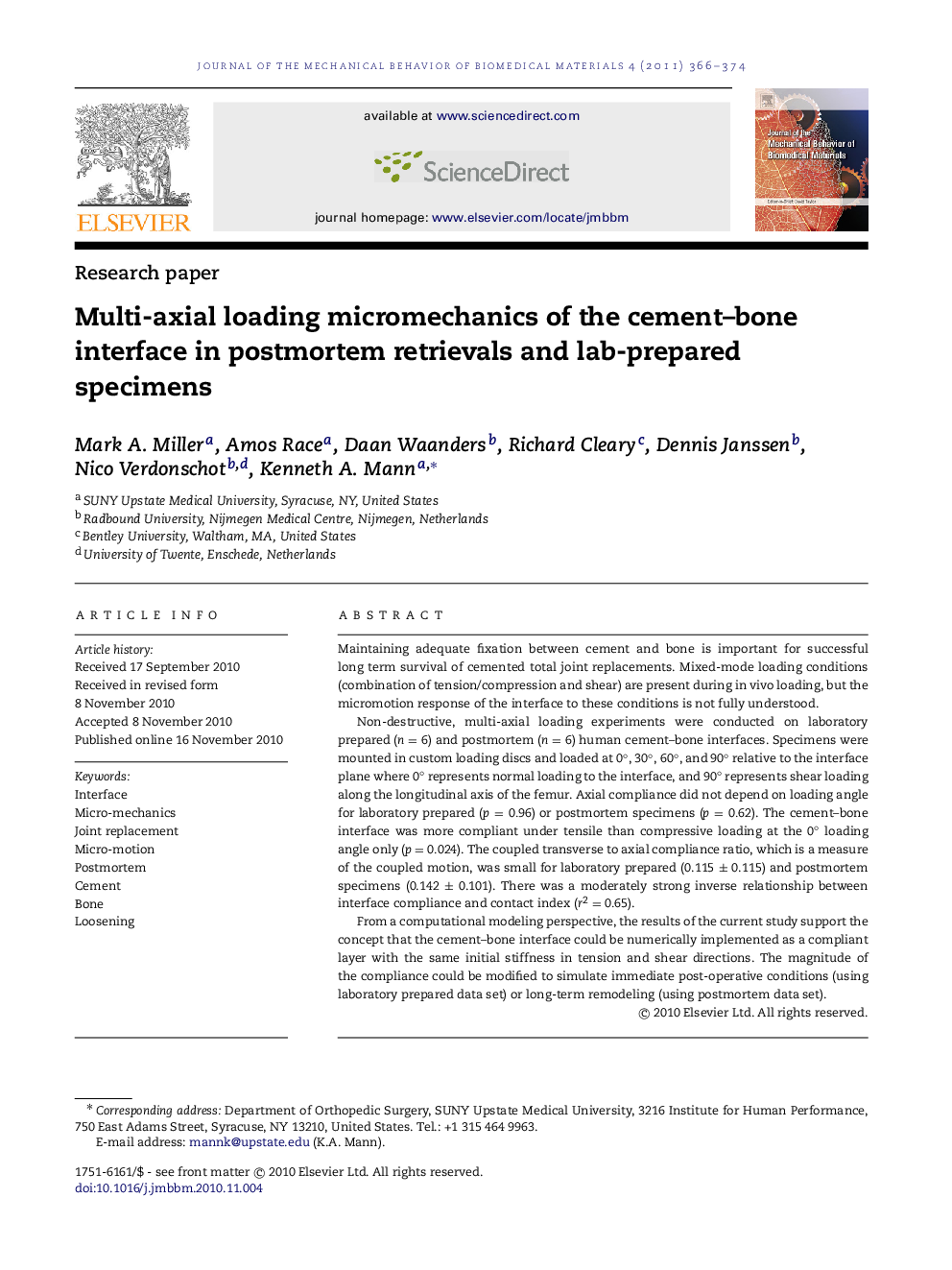| Article ID | Journal | Published Year | Pages | File Type |
|---|---|---|---|---|
| 811443 | Journal of the Mechanical Behavior of Biomedical Materials | 2011 | 9 Pages |
Maintaining adequate fixation between cement and bone is important for successful long term survival of cemented total joint replacements. Mixed-mode loading conditions (combination of tension/compression and shear) are present during in vivo loading, but the micromotion response of the interface to these conditions is not fully understood.Non-destructive, multi-axial loading experiments were conducted on laboratory prepared (n=6n=6) and postmortem (n=6n=6) human cement–bone interfaces. Specimens were mounted in custom loading discs and loaded at 0°, 30°, 60°, and 90° relative to the interface plane where 0° represents normal loading to the interface, and 90° represents shear loading along the longitudinal axis of the femur. Axial compliance did not depend on loading angle for laboratory prepared (p=0.96p=0.96) or postmortem specimens (p=0.62p=0.62). The cement–bone interface was more compliant under tensile than compressive loading at the 0° loading angle only (p=0.024p=0.024). The coupled transverse to axial compliance ratio, which is a measure of the coupled motion, was small for laboratory prepared (0.115 ± 0.115) and postmortem specimens (0.142 ± 0.101). There was a moderately strong inverse relationship between interface compliance and contact index (r2=0.65r2=0.65).From a computational modeling perspective, the results of the current study support the concept that the cement–bone interface could be numerically implemented as a compliant layer with the same initial stiffness in tension and shear directions. The magnitude of the compliance could be modified to simulate immediate post-operative conditions (using laboratory prepared data set) or long-term remodeling (using postmortem data set).
